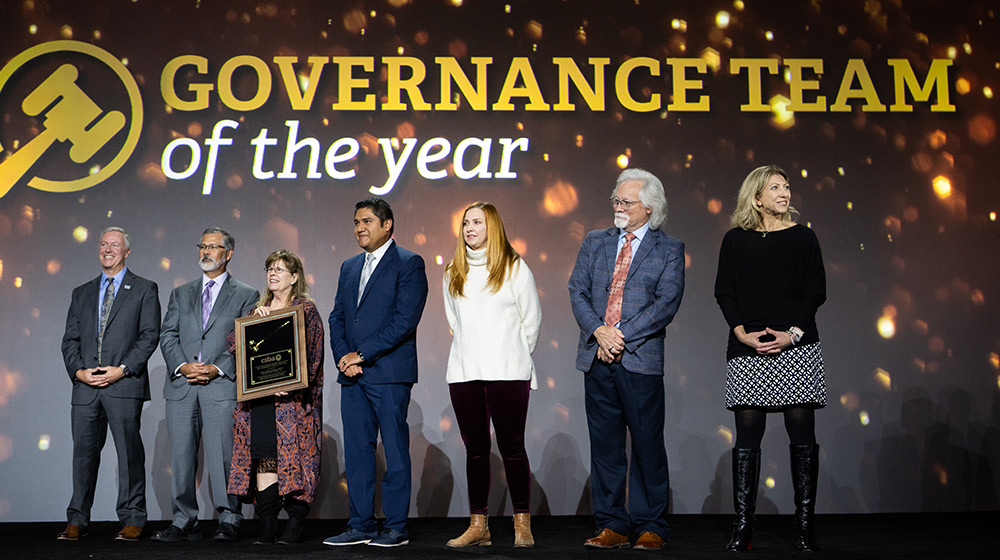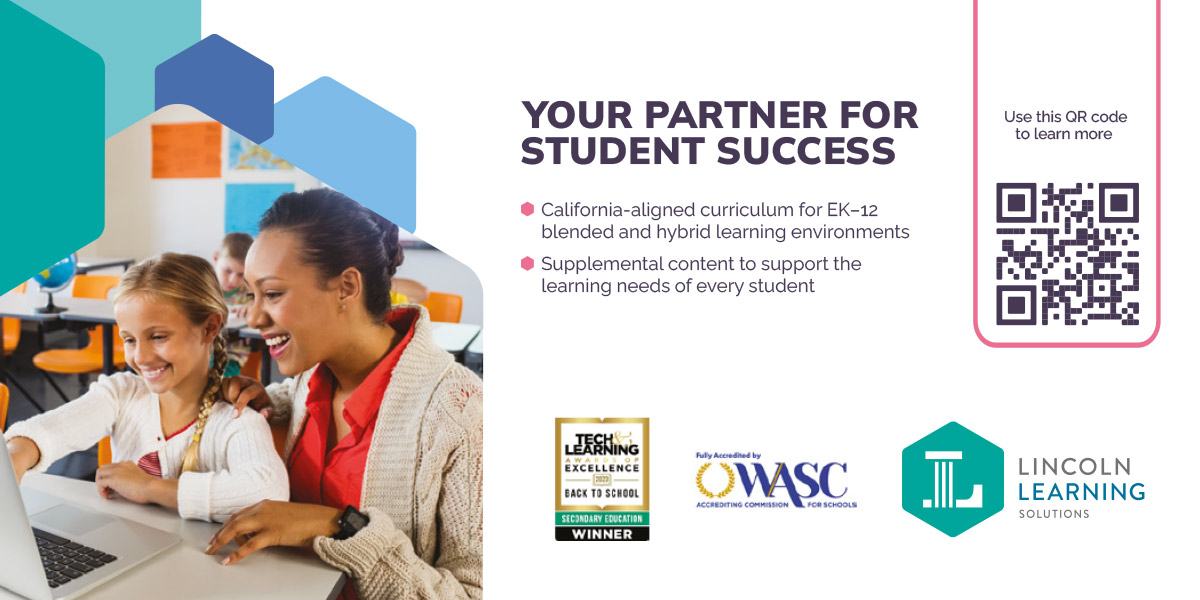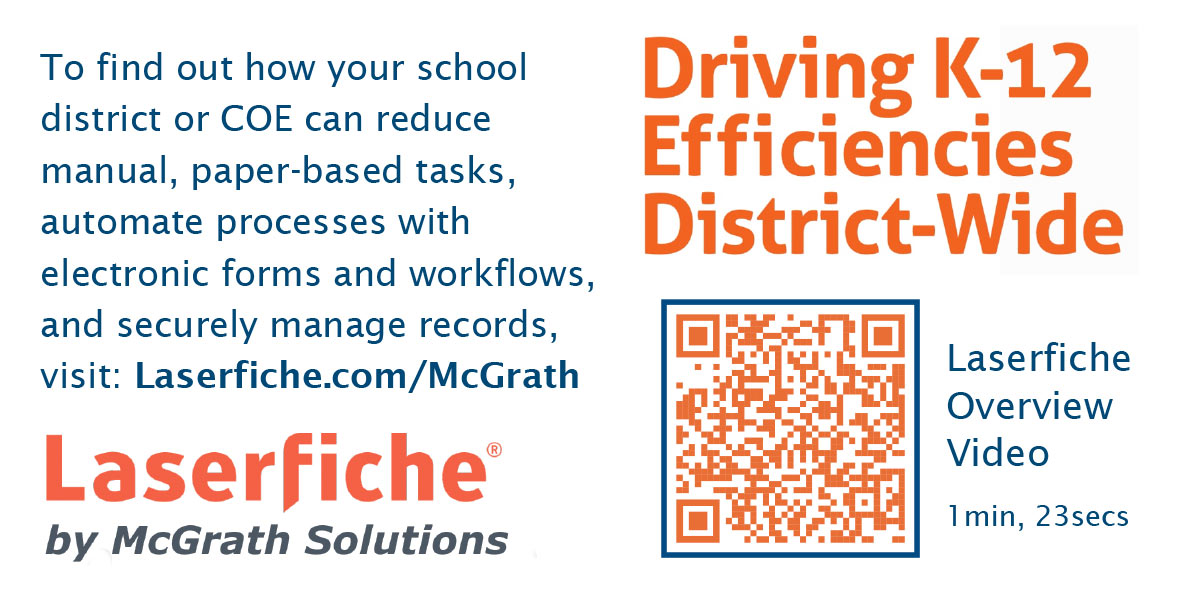“Based on our initial review of the Governor’s budget information, we’re encouraged that a $38 billion deficit — significantly smaller than the $68 billion shortfall predicted by the Legislative Analyst’s Office — has allowed the Governor to substantially maintain education funding at existing levels,” said CSBA CEO & Executive Director Vernon M. Billy. “We think the Governor’s decision to tap the Proposition 98 Reserve is a prudent step to weather a financial crisis that is still unfolding and to preserve base funding and flexibility for local governance teams. If the Governor’s budget numbers hold, he has established a solid foundation on which the Legislature can build as the budget negotiation process continues.”
Governance


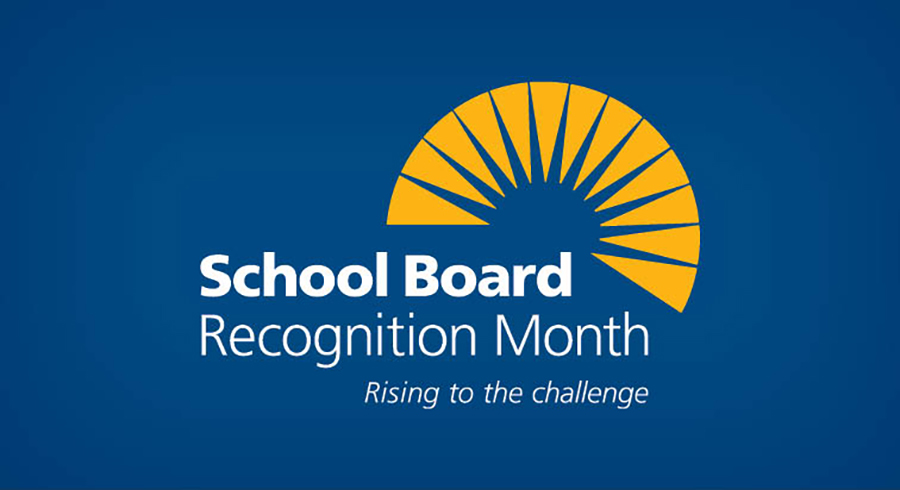
Trustees provide a critical accountability link between schools and the community and offer a level of accessibility to voters that is unrivaled by other public officeholders. CSBA encourages LEAs, community organizations, mayors and other local officials to designate January as a time to recognize their hard-working board members and educate the public about the important role that school boards play in schools and communities.
Leading into January, CSBA reached out to LEA communications professionals to make it easier than ever to recognize the hard work and dedication of your board of education by providing sample press release to get the word out to local reporters, a sample proclamation for city officials and a social media toolkit to show appreciation for the LEA’s board of education.
Through initiatives like this, School Boards in Action, the What’s Your Why? video series, board member profiles and more, CSBA recognizes and celebrates the crucial work of boards of education in supporting the conditions for student success.
Even veteran school board members acknowledge the work of a district or county office of education trustee is difficult and complex. New members may feel like they’re attempting to drink from a fire hose, learning all at once the intricacies of everything from education funding to federal special education requirements, to keeping up to date with evolving state law to reporting gifts.
To help smooth the transition, CSBA has developed a New Board Member Toolkit that will help support trustees as they navigate their new role. This content is a useful addition to what members learn through the association’s one-day Orientation for New Trustees or two-day Institute for New and First-Term Board Members seminar.
The New Board Member Toolkit includes the latest on how to read and understand the California Dashboard, tips for being an effective advocate, an explanation of the role of a trustee and the board’s role in the development and implementation of a Local Control and Accountability Plan, tips to lead and meaningfully participate in difficult meetings, an overview of CSBA sample policies and the Brown Act and more.
Materials are organized by category to be referenced at a moment’s notice so new trustees can feel confident and prepared as they navigate this transition and learn more about their unique role and responsibilities. Experienced board members will also be able to access the toolkit to refresh or deepen their understanding of more nuanced topics.


Troy Flint | tflint@csba.org
Editorial Director:
Kimberly Sellery | ksellery@csba.org
Staff Writers and Contributors:
Alisha Kirby | akirby@csba.org
Heather Kemp | hkemp@csba.org
Barbara Laifman | blaifman@csba.org
Bode Owoyele | bowoyele@csba.org
Christa Matthews | cmatthews@csba.org
Director of Graphic Design & Branding:
Kerry Macklin | kmacklin@csba.org
Senior Graphic Designer:
Amanda Moen | amoen@csba.org
Albert Gonzalez | Santa Clara USD
President-elect:
Bettye Lusk | Monterey Peninsula USD
Vice President:
Debra Schade | Solana Beach SD
Immediate Past President:
Susan Markarian | Pacific Union ESD
CEO & Executive Director:
Vernon M. Billy
News and feature items submitted for publication are edited for style and space as necessary.

As I sat down to write this column, my first as CSBA President, I couldn’t help but consider my upbringing and the path that led me to this point. I never could have imagined myself in this position when I decided to run for school board 17 years ago, let alone as a young boy growing up in the East Bay. My parents immigrated from Mexico to Los Angeles before settling in Concord, 20 minutes from Oakland and 50 minutes from the heart of Silicon Valley. At that time, few could have predicted the heights California’s tech industry would reach and the impact it would have on the Bay Area, California, the United States and the world.
Now, with the benefit of hindsight, it’s clear how technology is integrated in, and integral to, almost every aspect of modern life. So, when a transformational technology arrives on the scene, there’s no excuse for not taking it seriously. As education leaders, we have a responsibility to do everything in our power to prepare our schools and our students for the changes so that each student thrives in our global society.

As school board members, one of our primary responsibilities is to ensure that the voices and perspectives of our community are heard and valued. Authentic community engagement is essential in creating a vibrant, inclusive and successful educational environment. However, the commitment to community involvement doesn’t take a break during the winter, spring or summer vacations. To foster meaningful engagement year-round, school boards should adopt strategies that keep the lines of communication open, even during these breaks.
- Outreach and surveys: Sending out periodic surveys and questionnaires is a simple yet effective way to gather input and feedback from the community. These surveys can focus on various topics, from curriculum and extracurricular activities to administrative decisions. The results can guide the board’s actions and decisions.
2023 Governance Team of the Year
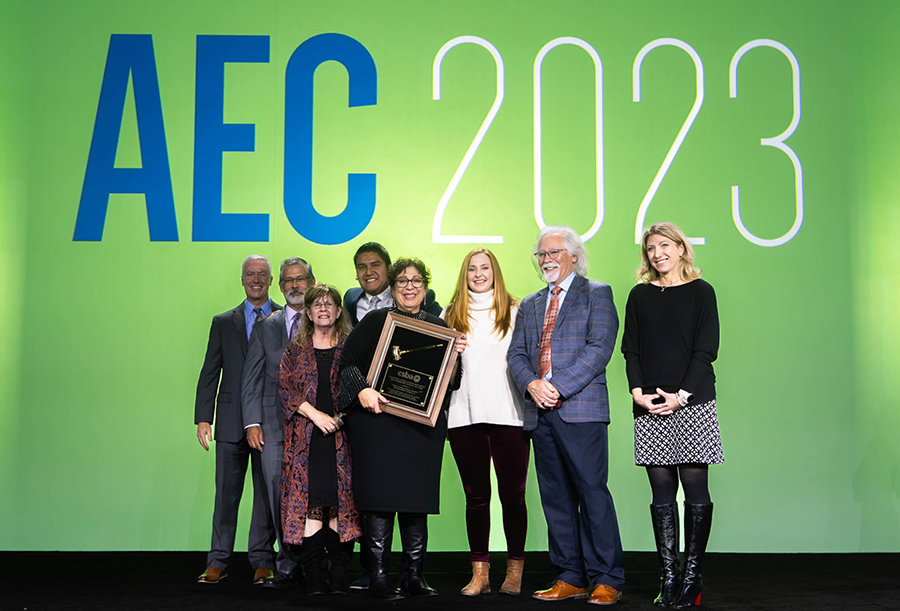
“This award is given to a governance team that governs effectively, communicates a common vision, focuses on learning and achievement for all students, applies an equity lens to guide decision making and exemplifies best practices in effective governance and boardsmanship,” said 2023 CSBA Vice President Bettye Lusk.
Visalia USD Board President Walta Gamoian accepted the award during the conference’s Second General Session.
Small school district boards have a unique perspective when it comes to setting budget priorities and making financial decisions. Join CSBA and School Services of California in these in-person workshops specially designed to support small and rural districts in understanding the board’s role in aligning policies and administrative regulations, as well as approving required plans and applications. The workshop will consider how to strategically access and maximize limited resources to best meet the needs of the students within a small school district. Accountability requirements of restricted programs, including federal and competitive grant opportunities, will be reviewed. Additionally, participants will explore strategies used successfully by some small school districts, such as multi-funded staff and pooling resources with other districts.

All workshops take place on Saturdays from 8:30 a.m.–5 p.m.
- March 23, 2024
Glenn Success Square
131 E. Walker Street
Orland, CA 95963
- April 6, 2024
Dorothy Inghram Learning Center
670 E. Carnegie Dr., Room B
San Bernardino, CA 92408
- April 20, 2024
Fowler High School
701 E. Main St.
Fowler, CA 93625
Governance
The four steps that Lake Tahoe Unified School District has utilized to create a governance handbook were covered during the session “Governance Handbook and Board Self-Evaluation” at CSBA’s 2023 Annual Education Conference and Trade Show in December.
The majority of local educational agency boards have a governance handbook, but all too often they are neglected — left to collect dust without regular review or updates. In Lake Tahoe USD, however, leadership has taken strategic steps to draft a handbook, which is updated annually, and regularly evaluates their practices against specific guidelines set forth in the document.

In recent years, there has been an alarming rise in opioid overdoses. The American Medical Association states that “drug-overdose deaths among people 10-19 years old jumped 109 percent between 2019 and 2021 in the U.S. … We are facing a national opioid crisis and it’s affecting our young people at an alarming rate. Just as students carry prescription inhalers to treat an asthma attack, we must destigmatize substance-use disorders and treat naloxone as a lifesaving tool.”
Statistics such as these have prompted legislative action to ensure the safety of individuals in various settings, including schools. California has taken significant steps to empower school districts to address opioid-related emergencies effectively. Senate Bill 114 and Assembly Bill 1166 stand out as key pieces of legislation that aim to equip schools with the necessary tools and legal protection to combat opioid overdoses on district premises.
County
Tailoring student leadership opportunities

In 1999, Sacramento County Office of Education Board President Bina Lefkovitz founded the nonprofit Youth Development Network and was co-director until 2010. Since then, she’s continued to promote equitable pathways that allow burgeoning student leaders from all walks of life to learn, grow and develop the qualities needed to spearhead the change they want to see.
This can be especially difficult for students served by county offices of education, which often provide direct instruction to a county’s most vulnerable student populations, including special education for severely disabled students, court and community schools for incarcerated and expelled youth, or programs for students with children.
MIG Course 4: Human Resources/Collective Bargaining
Feb. 20 | Riverside
The Brown Act
March 1 | West Sacramento
Governance with an Equity Lens
March 8-9 | Sacramento
2024 CSBA County Board Governance Workshop
March 9 | Monterey
MIG Course 3: School Finance Part 1 and Part 2

Thanks for reading our January 2024 newsletter!

